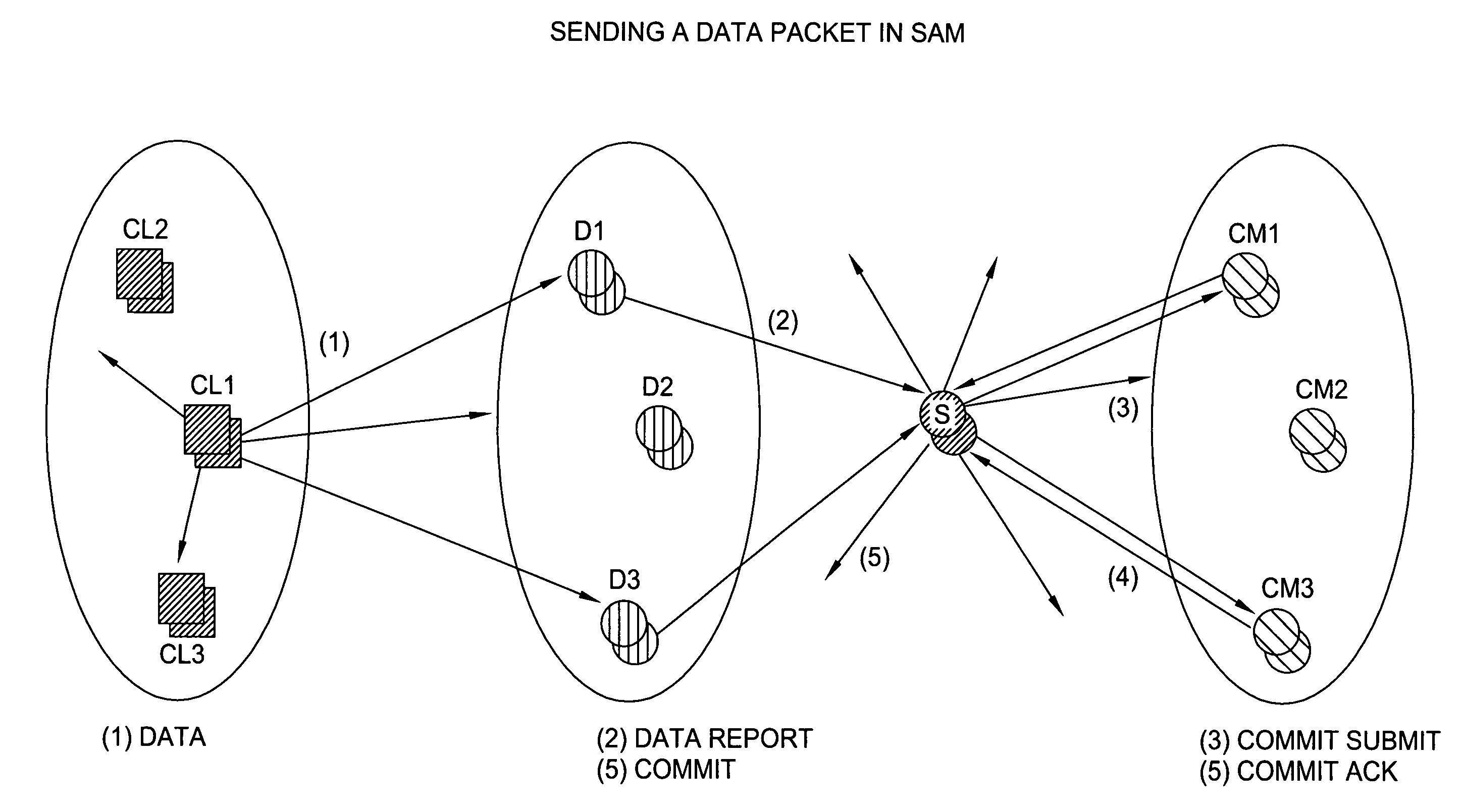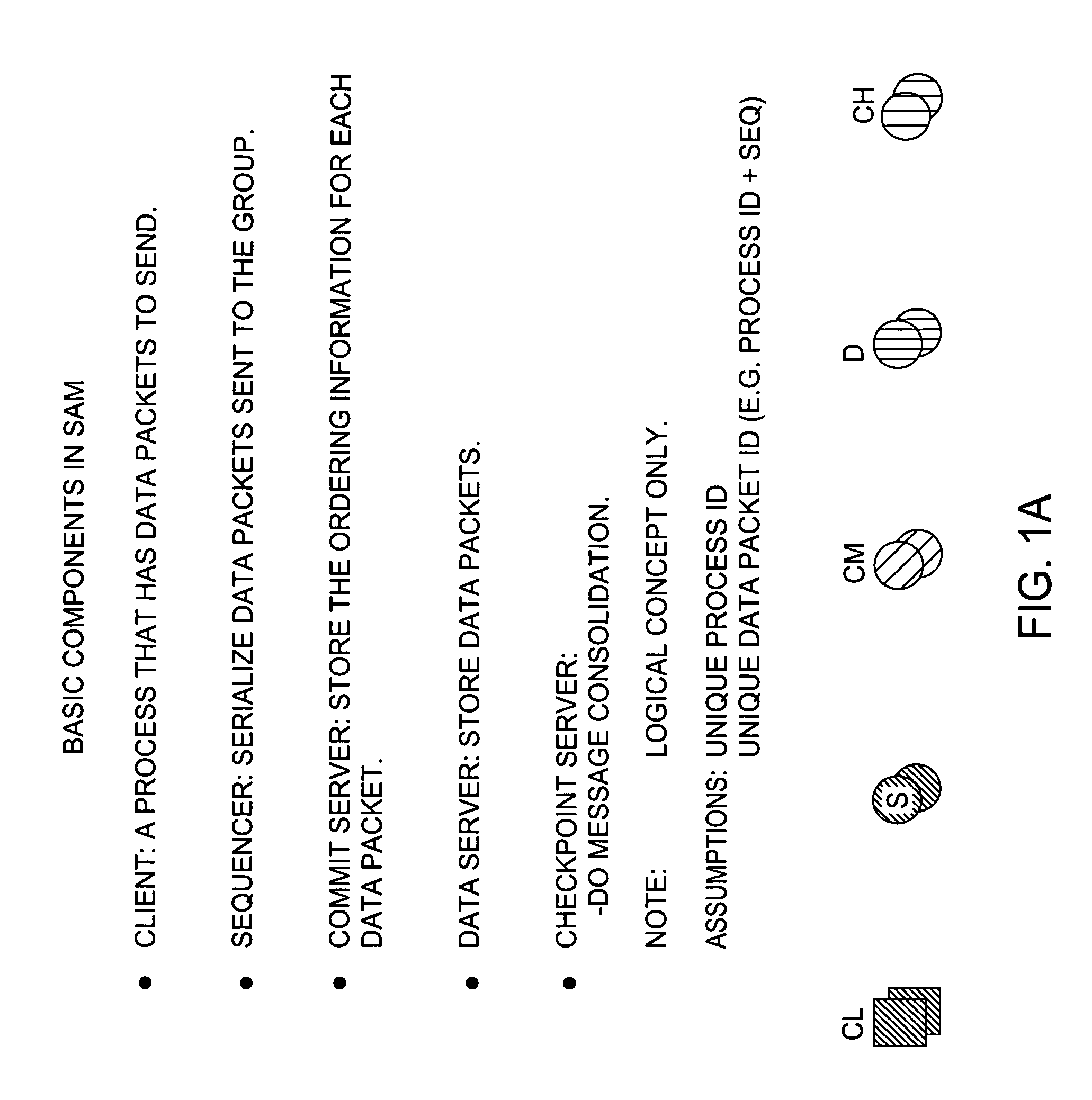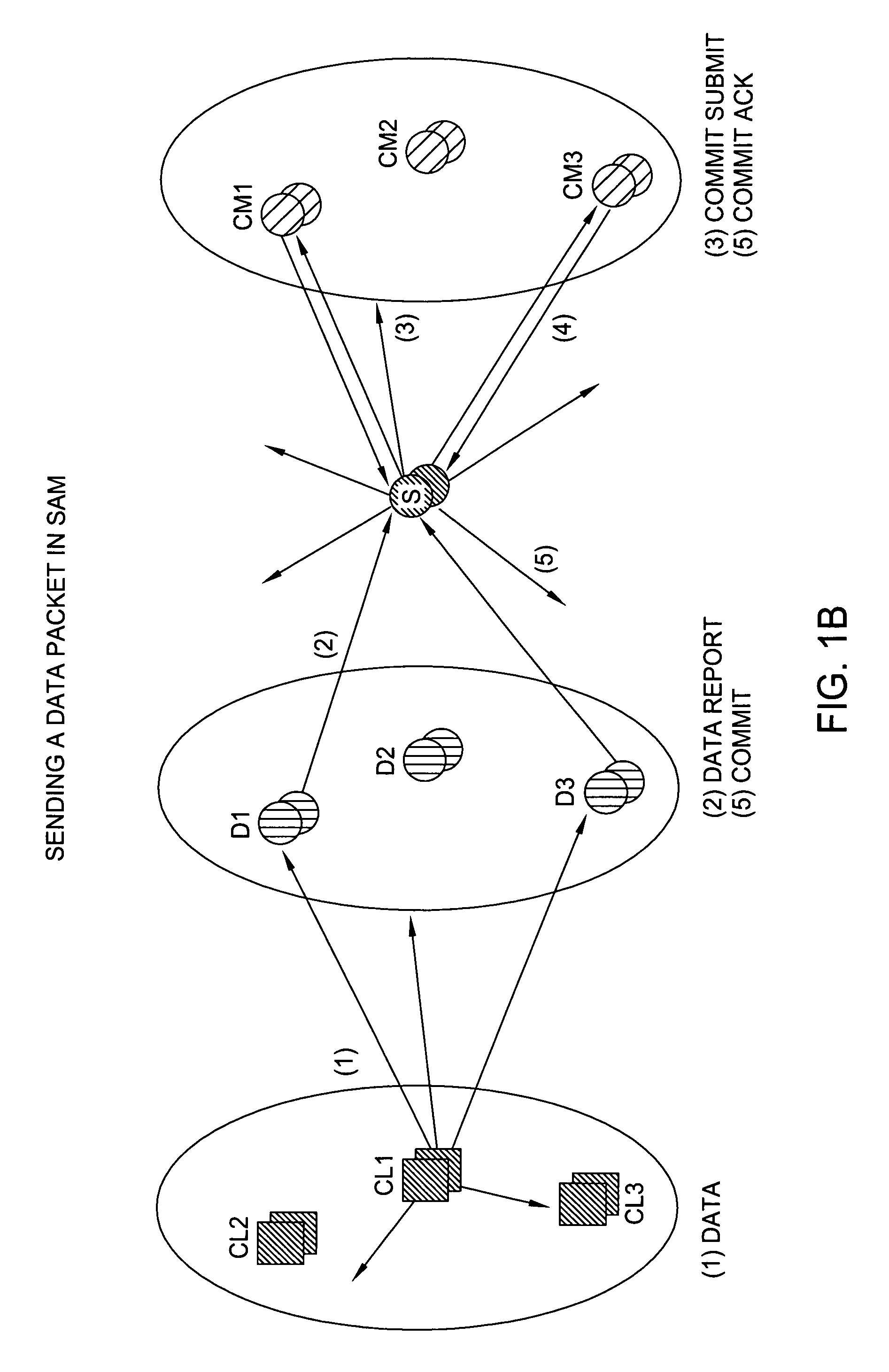Scalable atomic multicast
a multicast and atomic technology, applied in the field of communication protocols, can solve the problems of poor scalability of isis, performance of the entire multicast group is limited, performance bottlenecks, etc., and achieve good scaling properties
- Summary
- Abstract
- Description
- Claims
- Application Information
AI Technical Summary
Benefits of technology
Problems solved by technology
Method used
Image
Examples
Embodiment Construction
[0034]In the remainder of this specification, we assume that the underlying communication layer provides support for asynchronous, unreliable multicast communication. When multicast is not available, it can be easily simulated with a series of unicast transmissions. Although the underlying communication need not be reliable, the protocol can benefit from any technique that increases reliability, such as forward error correction (FEC). Similarly, any multicast congestion control technique can be easily incorporated in the system. We do not, however, consider multicast congestion control in this work.
[0035]SAM supports an open multicast group model. In other words, any process can send messages to the multicast group. This is different from some systems, where only the members of the group are allowed to send messages to the group.
[0036]The following discussion also assumes that each process in the system has a unique process identifier (PID), and that each message sent to the group h...
PUM
 Login to View More
Login to View More Abstract
Description
Claims
Application Information
 Login to View More
Login to View More - R&D
- Intellectual Property
- Life Sciences
- Materials
- Tech Scout
- Unparalleled Data Quality
- Higher Quality Content
- 60% Fewer Hallucinations
Browse by: Latest US Patents, China's latest patents, Technical Efficacy Thesaurus, Application Domain, Technology Topic, Popular Technical Reports.
© 2025 PatSnap. All rights reserved.Legal|Privacy policy|Modern Slavery Act Transparency Statement|Sitemap|About US| Contact US: help@patsnap.com



